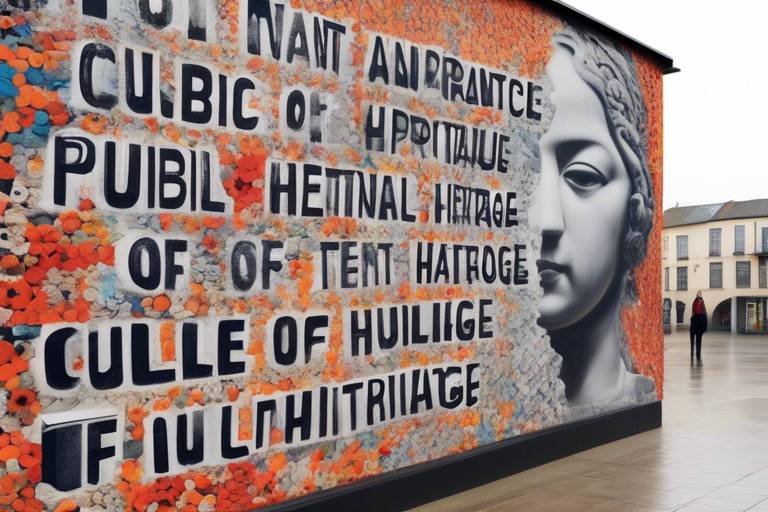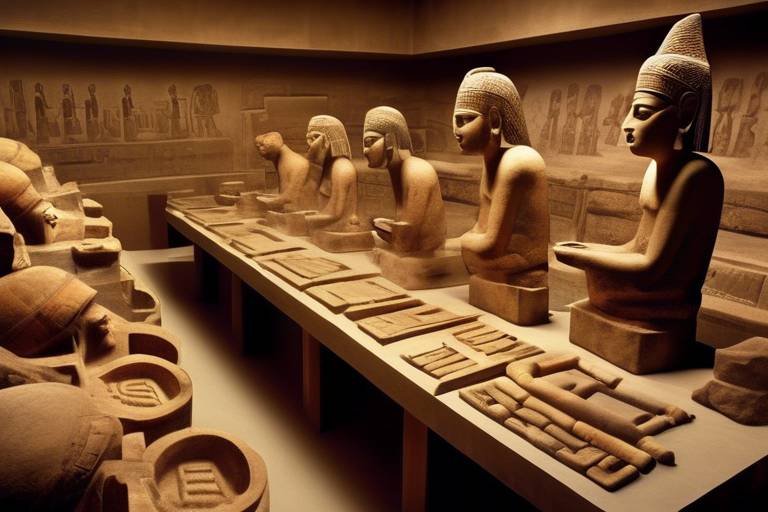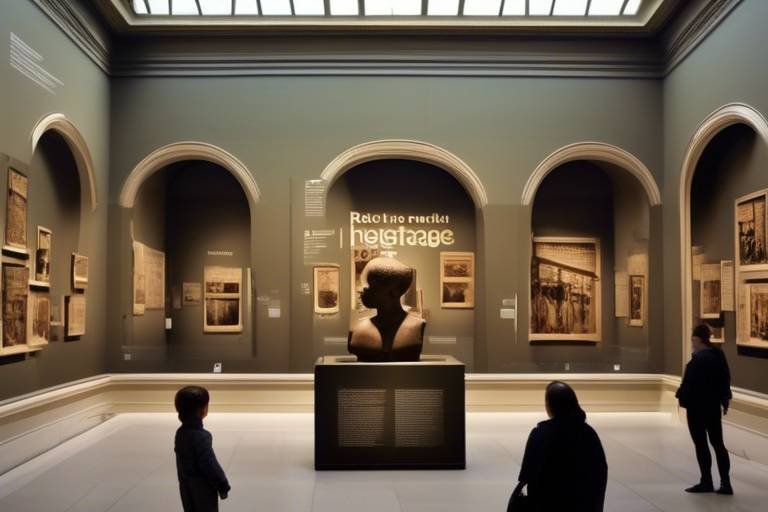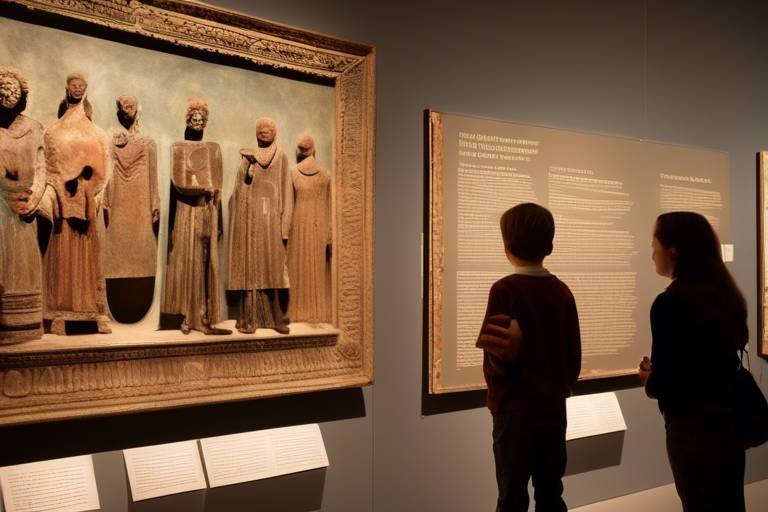The Legacy of the Silk Road in Global Culture
Exploring the enduring impact of the ancient Silk Road on contemporary global culture reveals a rich tapestry of interconnected influences that have shaped societies across vast distances and diverse landscapes. The legacy of the Silk Road transcends mere trade and extends to the exchange of ideas, the fusion of diverse traditions, and the promotion of cultural diversity on a global scale.

Historical Significance
Exploring the enduring impact of the ancient Silk Road on contemporary global culture, from trade and exchange of ideas to the fusion of diverse traditions and the promotion of cultural diversity.
Unraveling the historical significance of the Silk Road as a network of trade routes that connected the East and West, facilitating the exchange of goods, technologies, and cultures. The Silk Road was not just a physical path for the movement of goods but a bridge that connected civilizations, fostering economic prosperity and cultural exchange. It served as a conduit for the flow of silk, spices, precious metals, and ideas, shaping the development of societies along its vast expanse.
The Silk Road played a pivotal role in the development of ancient civilizations, enabling the transfer of knowledge and innovations across vast distances. This network of trade routes facilitated the exchange of goods such as silk from China, spices from India, and glassware from the Roman Empire. The cultural interactions along the Silk Road led to the blending of artistic styles, architectural techniques, and philosophical ideas, creating a rich tapestry of cultural heritage that continues to influence global society today.
Moreover, the Silk Road was not just a commercial route but a corridor of cultural exchange, where languages, religions, and traditions intermingled, giving rise to a diverse and interconnected world. The historical significance of the Silk Road lies not only in its economic impact but also in its role as a catalyst for cross-cultural dialogue and understanding, shaping the fabric of global culture for centuries to come.

Artistic Exchange
Artistic Exchange on the Silk Road was not merely about the trade of physical goods but also the exchange of creative ideas and artistic expressions that transcended geographical boundaries. The Silk Road acted as a melting pot of cultures, where artistic influences from diverse regions blended together to create a rich tapestry of creativity.
Art forms such as painting, sculpture, music, and dance underwent a transformative journey along the Silk Road, absorbing elements from different traditions and evolving into new and innovative styles. Artists were inspired by the cultural diversity they encountered, leading to the emergence of hybrid artistic techniques and motifs that reflected the interconnected nature of the Silk Road.
The exchange of artistic knowledge was not limited to finished works but also encompassed the sharing of techniques, materials, and artistic philosophies. For example, the intricate patterns of Persian carpets influenced the design of Chinese silk tapestries, while Buddhist cave paintings in Dunhuang revealed a fusion of Indian and Chinese artistic elements.
Moreover, the Silk Road provided a platform for artisans and craftsmen to showcase their skills and creativity to a broader audience. Artistic communities flourished in major trading hubs along the route, serving as hubs of innovation and cultural cross-pollination.
Through this vibrant artistic exchange, the Silk Road not only facilitated the transmission of artistic traditions but also sparked the creation of new forms of expression that continue to inspire contemporary artists worldwide. The legacy of artistic exchange on the Silk Road serves as a testament to the power of cultural interaction and collaboration in shaping the artistic landscape of the past and present.

Religious Syncretism
Religious syncretism along the Silk Road refers to the blending and merging of different religious beliefs and practices as a result of cultural interactions and exchanges that took place along the ancient trade routes. The Silk Road played a crucial role in the spread of major world religions such as Buddhism, Christianity, and Islam, leading to the creation of religiously diverse societies where elements of various faiths coexisted and influenced each other.
One of the key aspects of religious syncretism on the Silk Road was the adaptation and integration of religious ideas and symbols from different traditions into local belief systems. This process often resulted in the creation of hybrid religious practices and beliefs that reflected the cultural diversity and openness to new ideas characteristic of the Silk Road communities.
Moreover, the Silk Road facilitated not only the exchange of religious beliefs but also the cross-cultural dialogue and interaction among followers of different faiths. This interaction led to the enrichment and diversification of religious practices, rituals, and ceremonies as diverse religious communities shared and borrowed elements from one another.
Through religious syncretism, the Silk Road contributed to the formation of cosmopolitan and inclusive societies where individuals from various cultural backgrounds coexisted and interacted harmoniously, transcending religious boundaries and fostering mutual understanding and respect.
Overall, religious syncretism on the Silk Road exemplifies the profound impact of cultural exchanges and interactions on shaping religious beliefs and practices, highlighting the role of the ancient trade routes in promoting tolerance, diversity, and interconnectedness among different faith traditions.

Technological Innovation
When delving into the realm of technological innovation along the Silk Road, one cannot help but marvel at the transformative impact it had on societies across continents. The exchange of goods and ideas facilitated by this ancient network of trade routes sparked a wave of advancements that reshaped the course of history.
One of the most notable technological innovations that emerged along the Silk Road was in the field of agriculture. The introduction of new crops and farming techniques revolutionized agricultural practices, leading to increased food production and improved livelihoods for communities along the route. This exchange of agricultural knowledge not only boosted local economies but also paved the way for sustainable farming practices that continue to benefit societies today.
Furthermore, the navigational advancements spurred by the Silk Road played a crucial role in connecting distant lands and fostering cross-cultural interactions. The development of more efficient transportation methods, such as the use of camels and caravans, not only facilitated the movement of goods but also encouraged the exchange of ideas and technologies between different civilizations.
Metallurgy also witnessed significant progress along the Silk Road, with innovations in metalworking techniques leading to the production of high-quality metal goods that were highly sought after in markets across the region. The mastery of metallurgical processes not only enhanced the craftsmanship of artisans but also fueled economic growth and cultural exchange as metal goods became prized commodities in trade.
Through the lens of technological innovation, the legacy of the Silk Road shines brightly as a beacon of ingenuity and collaboration, showcasing how the exchange of knowledge and skills can spark advancements that transcend borders and shape the course of human history.

Multicultural Cuisine
Embark on a culinary journey through the vibrant tapestry of multicultural cuisine that traces its roots back to the ancient Silk Road. This culinary legacy is a melting pot of flavors, spices, and cooking techniques that have transcended borders and enriched palates around the globe. Imagine the tantalizing aromas of spices wafting through bustling marketplaces, where traders from distant lands bartered exotic ingredients and culinary secrets.
The Silk Road served as a conduit for the exchange of culinary treasures, from the aromatic spices of the East to the rich flavors of the West. This cross-cultural pollination gave rise to a fusion of ingredients and cooking styles, creating a diverse culinary landscape that continues to evolve and inspire chefs worldwide. Picture a table set with dishes that bear the imprint of multiple cultures, each bite a symphony of flavors that tell stories of distant lands and ancient traditions.
One of the most iconic culinary legacies of the Silk Road is the blending of flavors from different regions, resulting in dishes that are a harmonious blend of sweet, savory, spicy, and tangy notes. This fusion of tastes reflects the cultural diversity and interconnectedness fostered by the Silk Road, where food became a medium of cultural exchange and celebration.
Through the exchange of ingredients such as spices, fruits, grains, and cooking techniques, culinary traditions along the Silk Road evolved and adapted, giving birth to new dishes that resonated with the palates of diverse communities. Imagine the sizzle of a wok as ingredients from different corners of the world come together to create a symphony of flavors that transcend linguistic barriers and unite people through the universal language of food.
Today, the influence of Silk Road cuisine can be seen in the eclectic menus of modern restaurants, where dishes inspired by ancient recipes are given a contemporary twist. Chefs draw inspiration from centuries-old culinary traditions, infusing them with innovative techniques and local ingredients to create culinary masterpieces that pay homage to the rich tapestry of flavors that define Silk Road cuisine.

Linguistic Diversity
The Silk Road was not just a pathway for goods and ideas but also a melting pot of languages and dialects, fostering a rich that continues to shape our global communication today. Imagine traders from distant lands exchanging not only silk and spices but also words and expressions, creating a linguistic tapestry woven with threads of various tongues.
As caravans traversed the vast expanse of the Silk Road, languages intertwined like threads in a complex weave, leading to the blending of vocabularies and grammatical structures. The along the Silk Road was a testament to the power of communication in transcending cultural barriers and forging connections between diverse communities.
From the Sanskrit inscriptions found in Central Asia to the Arabic manuscripts in Dunhuang, the linguistic legacy of the Silk Road is evident in the diverse scripts and writing systems that once flourished along the ancient trade routes. The exchange of ideas was not limited to goods but extended to the realm of language, giving rise to a rich tapestry of verbal expressions and written traditions.
Through the of the Silk Road, we can trace the footsteps of ancient travelers and traders who carried not only merchandise but also words and phrases that transcended borders and boundaries. The echoes of these linguistic exchanges can still be heard in the multilingual societies that dot the modern landscape, a testament to the enduring legacy of the Silk Road in shaping our global linguistic heritage.

Architectural Influence
The Silk Road, with its vast network of trade routes connecting the East and West, left a profound architectural influence on the regions it traversed. The architectural diversity along the Silk Road reflects a blend of styles, techniques, and materials from various cultural traditions, creating a unique fusion of design elements. From the intricate carvings of Buddhist cave temples in Dunhuang to the grand mosques with vibrant tile work in Samarkand, the architectural heritage of the Silk Road showcases the cross-cultural exchange that occurred along the ancient route.

Modern Revival
As we delve into the modern revival of the Silk Road, we witness a resurgence of interest in the historic trade route that once connected civilizations across continents. The Belt and Road Initiative, launched by China, aims to revitalize the ancient Silk Road by fostering economic cooperation, cultural exchange, and infrastructure development among participating countries. This ambitious project seeks to rekindle the spirit of connectivity and collaboration that defined the Silk Road in ancient times.
Through the Belt and Road Initiative, countries along the Silk Road are forging new partnerships and strengthening existing ties to promote mutual growth and prosperity. By investing in infrastructure projects such as roads, railways, ports, and energy facilities, the initiative aims to enhance connectivity and facilitate trade between nations, revitalizing the economic corridors that once thrived along the historic route.
Moreover, the modern revival of the Silk Road extends beyond economic cooperation to encompass cultural exchange and people-to-people interactions. By promoting educational programs, tourism initiatives, and cultural exchanges, the Belt and Road Initiative seeks to foster mutual understanding and appreciation among diverse communities along the Silk Road, revitalizing cultural heritage and promoting intercultural dialogue.
As the Belt and Road Initiative continues to unfold, it holds the potential to reshape global trade patterns, stimulate economic development, and promote cross-cultural understanding on a scale reminiscent of the ancient Silk Road. By embracing the legacy of the past and charting a course for the future, the modern revival of the Silk Road offers a glimpse into a world where connectivity, cooperation, and cultural exchange are at the forefront of international relations.
Frequently Asked Questions
- What is the significance of the Silk Road in global culture?
The Silk Road holds immense significance in global culture as it facilitated the exchange of goods, ideas, and cultures between the East and West, shaping the world as we know it today.
- How did the Silk Road influence artistic exchange?
The Silk Road played a crucial role in fostering artistic exchange by influencing art forms, aesthetics, and craftsmanship across different regions, giving rise to unique cultural expressions that continue to inspire creativity.
- What role did the Silk Road play in religious syncretism?
The Silk Road contributed to the spread of religions such as Buddhism, Christianity, and Islam, leading to the syncretism of beliefs and the establishment of religiously diverse societies along its routes.
- What are some examples of technological innovations along the Silk Road?
Technological innovations along the Silk Road included advancements in agriculture, navigation, and metallurgy, which transformed societies and facilitated cross-cultural interactions, paving the way for progress and development.
- How did the Silk Road influence multicultural cuisine?
The Silk Road influenced multicultural cuisine through the exchange of spices, ingredients, and cooking techniques, resulting in a diverse and vibrant culinary landscape that continues to shape global gastronomy.
- What linguistic diversity was fostered by the Silk Road?
The Silk Road fostered linguistic diversity through the interactions between different cultures, leading to the exchange of languages, dialects, and scripts, which significantly impacted linguistic landscapes worldwide.
- How did the Silk Road influence architectural styles?
The Silk Road influenced architectural styles by blending design, construction, and ornamentation techniques from various cultural traditions, resulting in a rich architectural heritage that reflects the cross-cultural interactions along its historic routes.
- What is the modern revival of the Silk Road?
The modern revival of the Silk Road, exemplified by initiatives like the Belt and Road Initiative, aims to promote economic cooperation, cultural exchange, and connectivity among countries along the historic route, revitalizing the spirit of cooperation and exchange that defined the ancient Silk Road.



















